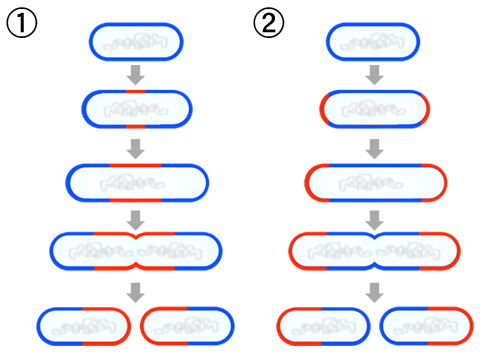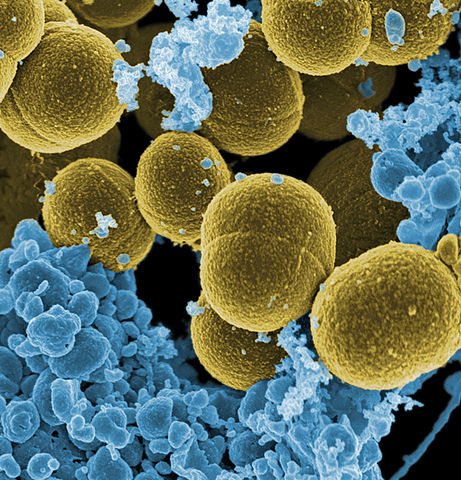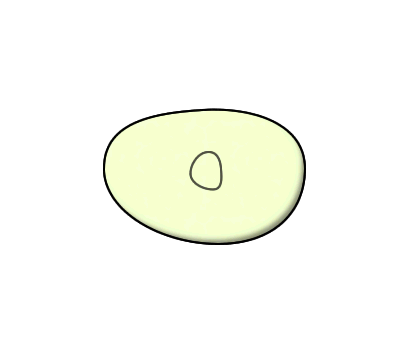Binary Fission
Online Biology Dictionary
 Above: Cellular growth (elongation) and binary fission of bacilli. Blue and red lines indicate old and newly-generated bacterial cell wall, respectively. 1: growth at the center of bacterial cell (as in Bacillus subtilis or E. coli). 2: Apical growth (as in Corynebacterium diphtheriae).
Above: Cellular growth (elongation) and binary fission of bacilli. Blue and red lines indicate old and newly-generated bacterial cell wall, respectively. 1: growth at the center of bacterial cell (as in Bacillus subtilis or E. coli). 2: Apical growth (as in Corynebacterium diphtheriae).
|
|

|
| Staphylococcus aureus |
Binary fission is the asexual reproduction of a cell, without mitosis or meiosis, by division into two approximately equal parts. This method of cellular reproduction occurs only in prokaryotes (bacteria and archaeans), although it is true that some organelles of eukaryotic cells, such as the mitochondria reproduce themselves by this method.
As one might expect, the volume of the two daughter cells produced is initially half that of the parent cell before the division. But each daughter cell does contain a complete copy of the parental chromosome. Although this form of reproduction is asexual, it is not the same as vegetative reproduction, a process occurring only in eukaryotes that depends on the mitotic reproduction of cells.
Before fission can occur, the cell must replicate its chromosome, which is circular. This process starts when a replication bubble opens in the DNA of the chromosome. There is normally a single origin of replication in prokaryotes, not multiple ones as is the case in eukaryotes. As the bubble gets larger and larger, the separated chromosome strands become longer and longer. DNA polymerase converts each of these single strands of DNA into double strands and, ultimately, two circular chromosomes are produced. Each chromosome then affixes itself to the cell membrane. As the cell stretches out during division, the two chromosomes move apart, and one passes into each of the two daughter cells.
The actual physical division of the cell into two compartments occurs when the cell wall and cell membrane grow inward to form a wall ("division septum") across the middle of the cell. The septal ring proteins, which collect around the equatorial site of division, control this process.
The term binary fission is frequently used, incorrectly, to refer to the division of unicellular eukaryotes, but strictly speaking, the term should only be applied to prokaryotes.
Most shared on Macroevolution.net:
Human Origins: Are we hybrids?
On the Origins of New Forms of Life
Mammalian Hybrids
Cat-rabbit Hybrids: Fact or fiction?
Famous Biologists
Dog-cow Hybrids
Prothero: A Rebuttal
Branches of Biology
Dog-fox Hybrids
